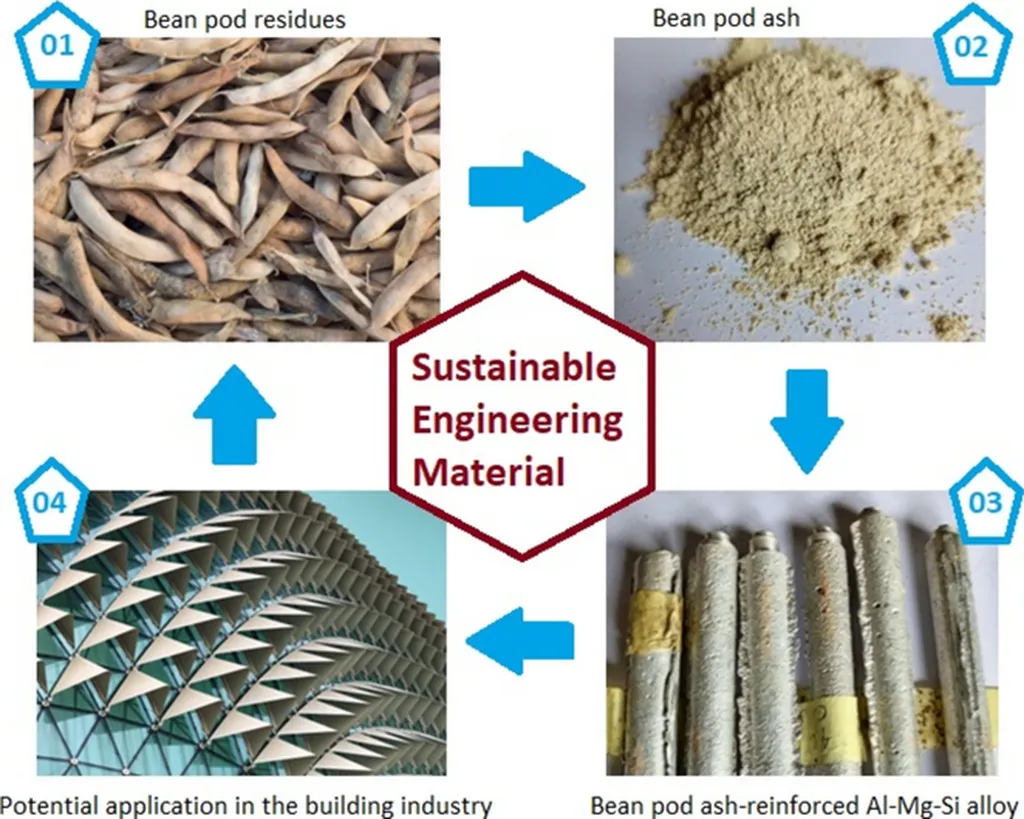In the quest for sustainable and affordable construction materials, researchers have turned to an unlikely ally: the humble locust bean. A recent study published in the *ABUAD Journal of Engineering Research and Development* (translated from Yoruba as “Afe Babalola University, Ado-Ekiti Journal of Engineering Research and Development”) explores the potential of locust bean pod ash combined with Portland cement to enhance the strength and durability of compressed earth bricks. This innovative approach could revolutionize the construction industry, particularly in regions where traditional building materials are scarce or expensive.
Justin Tapgun, a researcher from the College of Arts, Science and Technology in Kurgwi, Shendam Plateau, Nigeria, led the study. Tapgun and his team investigated how locust bean (Parkia biglobosa) pod ash and Portland cement could improve the properties of compressed earth bricks. “The major problem associated with compressed earth bricks is the high rate of water absorption and lack of durability properties,” Tapgun explained. “This makes the bricks soluble in water and limits their use and performance.”
The researchers tested various properties of the bricks, including density, compressive strength, permeability, water absorption, shrinkage, sorptivity, and abrasion resistance. The results were promising. Bricks stabilized with a combination of 10% cement and 10% locust bean pod ash showed a significant increase in compressive strength, reaching 2.52 N/mm² at 28 days and 2.80 N/mm² at 56 days. This represents a 50% and 53.21% increase in strength over the control brick samples, respectively.
Moreover, the stabilized bricks exhibited lower permeability, higher abrasion resistance, reduced shrinkage, and lower sorptivity compared to untreated bricks. “Cement and locust bean pod ash are good stabilizing agents in compressed earth bricks,” Tapgun noted. “This research recommends using cement and locust bean pod ash at 10%C:10%LBPA in compressed earth bricks, leading to robust, stabilized, and durable bricks.”
The implications of this research are far-reaching. In regions where construction materials are expensive or environmentally harmful, the use of locally sourced and sustainable materials like locust bean pod ash could provide a cost-effective and eco-friendly alternative. This could be particularly impactful in the energy sector, where the construction of durable and efficient buildings is crucial.
The study also highlights the potential for reducing environmental problems by utilizing indigenous waste materials. As Tapgun pointed out, “The use of Portland cement and locust bean pod ash as a stabilizing material seems to be a feasible solution not only to the problem associated with compressed earth bricks but also helps in the adoption of Indigenous waste material of locust bean pod in the production of bricks which will help reduce the environmental problem.”
This research could pave the way for future developments in sustainable construction. By leveraging locally available resources and innovative techniques, the construction industry can move towards more environmentally friendly and cost-effective solutions. As the world grapples with the challenges of climate change and resource depletion, such advancements are not just beneficial but essential.

